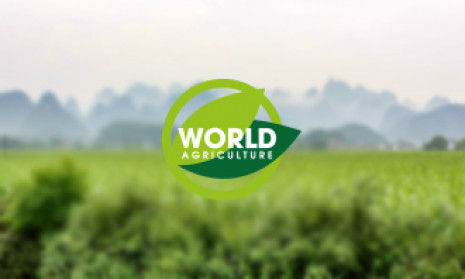NPK efficiency and “plowing”

The world population is approximately 6.5 billion (6.5 x 10 9) and it is expected to rise to 9.5 x 10 9 within the next few decades. This rise will greatly increase the likelihood of mass starvation on a scale not previously witnessed, unless there are increases in both the annual output of fertilisers and the efficiency of their use, especially with respect to nitrogen and phosphorus (N & P). World Agriculture has published two papers on the roles of N and P fertilisers. The difficulties confronted by each of these elements are quite different.
There is a limitless supply of N, as it is cycled from the atmosphere (78 %N2 )to the soil and back. It is fixed in a reactive form by blue-green bacteria (Cyanobacteria), root nodule bacteria, lightning and as NH3 in the Haber- Bosch process for industrial and fertiliser use. The industrial fixation of N2 currently consumes 4 % of the world’s supply of natural gas, as a source of hydrogen, and 1-2 % of total energy production, mostly as electricity, some of which is generated by natural gas (Smil 2011).
The situation with P is different. The world’s available reserves of P are limit- ed and predictions of their life range from 50 years to centuries (Cornish, this issue). As world population increases, use of both N and P fertilis- ers will also increase. A major improve- ment in the efficiency with which both N and P are used in agricultural rota- tions is essential. At present, this is measured as the amount in an edible crop expressed as a percentage of that in the fertiliser.
Experimental evidence from 15N studies indicates that, for wheat, the efficiency of N use can be very high:85-90 % (Smil 2011); but in agriculture as a whole it is of the order of only 30-35 % for both N and P, although a reliable estimate for P is at present questioned, owing to the difficulty of estimating the slow release of some of the residual P, which is fixed in soil. The value for organic fer- tilisers is no greater and their green- house gas production is worse (Goulding et al. 2011), although organic crop waste should, neverthe- less, be returned to the soil to main- tain levels of organic matter, whenever possible.
Meat consumption is increasing and this causes further stresses on the agri- cultural use of N. Not only is the yield of metabolisable energy (ME) pro- duced per ha lower in meat products compared with field crops but, in addition, N efficiency is much poorer as a consequence, in particular, of the high losses of N in excreta. This is reflected in a very low world-wide N efficiency of only 15 % for total food products (Ford, this issue, Smil 2011).
In order to improve the efficiency of use for both N and P by precision soil management, a detailed knowledge of top-soil status and climatic conditions is urgently needed on a field/area basis (Cornish, this issue), so that losses and pollution caused by their run-off can be reduced. For this purpose appropri- ate crop rotations and management are needed , as these also improve soil nutrient use.
An important factor in this may be the introduction of zero tillage, where soils and crops are suit- able (Cornish, this issue, Goulding et al. 2011); but have we not heard of this before? Faulkner (1945), wrote. “The truth is that no one has ever advanced a scientific reason for plow- ing. ----- it seems logical to suggest the wisdom of trying to devise imple- ments which negotiate the trashy sur- face!” Ah well, ‘is there nothing new under the sun?’ There is and a pur- pose of this Journal is to present reli- able evidence, to draw conclusions from it and to indicate possible consequences of alternative courses of action based on those conclusions.
References
Cornish, P.S. (2011) Peak phospho- rus: implications for agriculture. World Agriculture, 2, this Issue. Faulkner, E. (1945) Plowman’s Folly.
University of Oklahoma Press, OUPRESS.Com, Amazon.co.uk. Ford, B. (2011) Synthetic meat. World Agriculture, 2, This issue. Goulding, K.W.T., Trewavas, A.J. & Giller, K.E. (2011) Feeding the
World: A contribution to the debate. World Agriculture, 2, 32-38.
Smil, V. (2011) Nitrogen cycle and world food production. World Agriculture, 2, 9-13.

